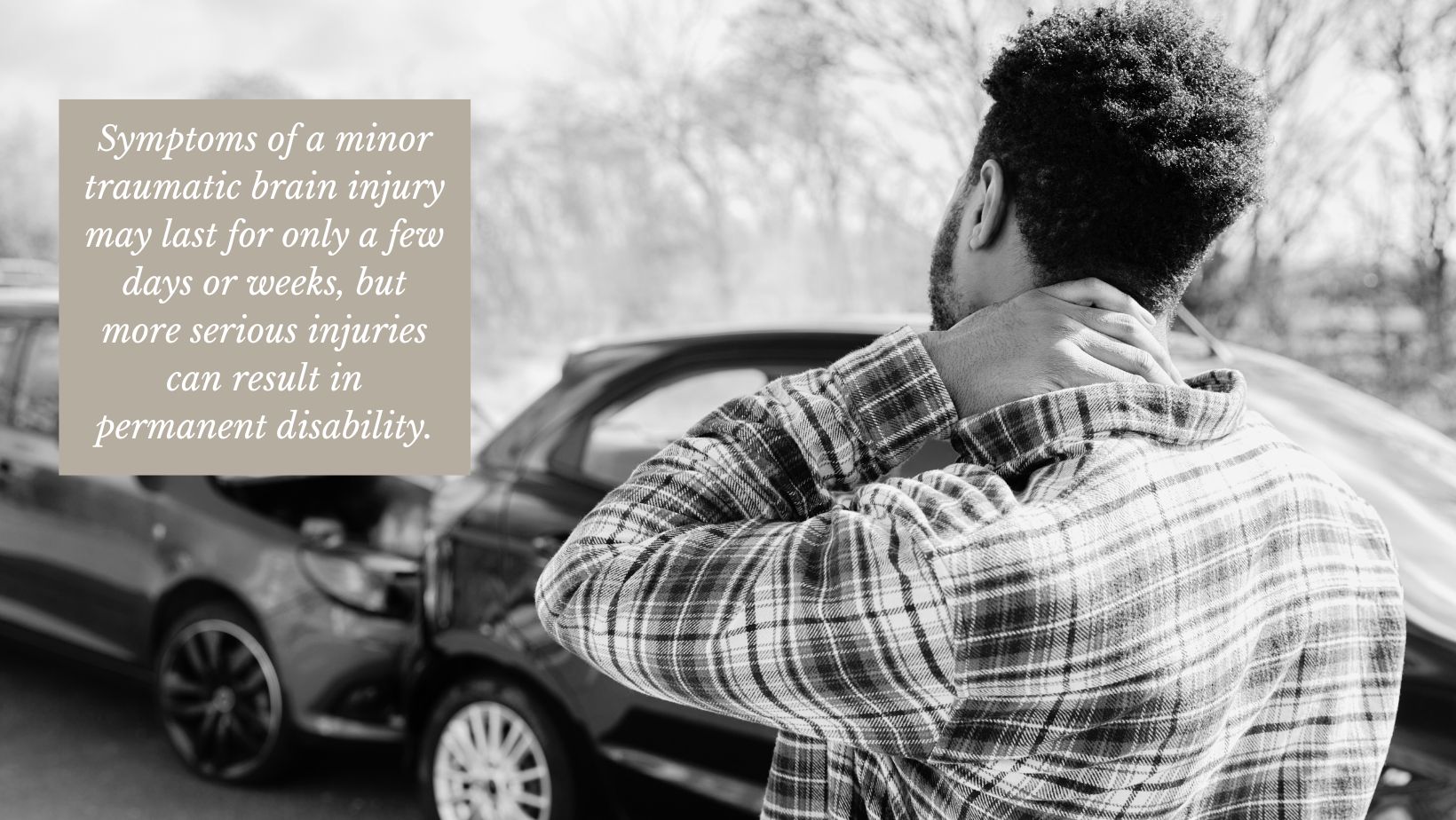After a slip and fall or car accident, there is often clear evidence of injuries, such as broken bones, cuts, and bruises. But there can also be an invisible injury that is difficult to prove. The human body can suffer harm that can go undetected for weeks, months, or even years unless you know what to look for.
Traumatic brain injury, soft tissue injuries, and even mental disorders can all result from a serious fall or crash. You will need an experienced personal injury attorney to help prove it and receive the compensation you deserve.
Could You Have an Invisible Injury?
Some injuries are easily overlooked because they do not present in an obvious way. These are called invisible or hidden injuries. A victim may look fine but feel some sort of pain or discomfort. Sometimes medical tests or an examination by a medical professional will uncover the problem. Other times, however, tests such as X-rays, CT scans, or MRIs may come back normal. This lack of concrete evidence does not mean the victim isn’t injured, it just means it will be more challenging to prove it.
Hidden injuries fall into the following categories:
Traumatic Brain Injuries
Anytime someone hits their head or their head is shaken violently back and forth, they can sustain a traumatic brain injury (TBI). Vehicle crashes are the leading cause of TBI hospitalizations for 15 to 44-year-olds. TBIs also happen when the head hits the floor or sidewalk after slipping and falling.
TBIs can range from a minor concussion to a blood clot, brain bleed, or damage that extends down the spinal column. Any injuries to the head should be taken very seriously and victims should seek medical attention immediately. While symptoms don’t always show up right away, the following symptoms can be signs of a traumatic brain injury:
- Headache
- Anxiety or depression
- Mood swings
- Nausea or vomiting
- Insomnia
- Loss of consciousness
- Impaired speech, vision, or balance
- Memory loss
- Seizures
Symptoms of a minor traumatic brain injury may last for only a few days or weeks, but more serious injuries can result in permanent disability. CT scans, MRIs, and other testing can help form a medical diagnosis of an injury after an accident. Not only will this help the victim get the help they need to recover, but it can serve as evidence in proving the injury to an insurance company or in court.
A TBI may resolve with rest or may require medication, surgery, or physical and cognitive therapy.
Nerve Injuries
Pinched nerves, whiplash, and sciatica are all related to nerve or spinal trauma. Unlike paralysis or more serious spinal injuries, these can be difficult to detect and prove. For example, a victim with whiplash may not be able to turn their head or lift their arms overhead, but there is nothing visible on an MRI.
Symptoms of nerve damage can include:
- Numbness or tingling
- Stiffness
- Shooting pain or a burning sensation
- Muscle spasms
- Weakness
- Slow reflexes
- Bladder or bowel control issues

If there is an underlying cause for the nerve issue such as a herniated disc, it may show up on an MRI or CT scan. There are also neurological tools that can show electrical activity in the muscles and measure how nerves respond to stimuli. Without this type of evidence, nerve damage can be difficult to prove.
As long as the nerves are not cut, healing is possible and treatment may include medication and therapy. More severe nerve injuries may be repaired with surgery, while some damage might be permanent.
Internal Bleeding/Organ Damage
A crash victim may assume the pain in their abdomen is just bruising, but it could indicate internal bleeding or organ damage. Any of the following symptoms are a sign that there is an invisible injury:
- Dizziness
- Numbness or tingling
- Nausea or vomiting
- Shortness of breath
- Chest pain
- Swelling
- Bleeding from ears, nose, or mouth, or while urinating
Like a traumatic brain injury, these problems may be proven with a medical exam and tests. The seriousness of possible internal bleeding or organ damage makes it extremely important to get medical attention as soon as possible whenever unusual symptoms like this appear. Surgery to repair the damage may be necessary.
Soft Tissue Injuries
Sprains, strains, and muscle tears are common in accidents and falls and some can be hard to diagnose. This is because these injuries to soft tissues don’t always show up on an X-ray. Still, the victim can suffer a lot of pain as the injury heals. Symptoms include:
- Pain
- Swelling
- Weakness
- Limited range of motion
Proving soft tissue injuries can often be a matter of demonstrating how the victim’s movement has been impaired, for example, not being able to put weight on a sprained ankle.
Common treatments for soft tissue injuries are rest, anti-inflammatory medication, and physical therapy. Surgery is not usually necessary.
Mental/Psychological Injuries
The hardest invisible injuries to prove are those that involve emotional trauma. It surprises some people that conditions such as Post Traumatic Stress Disorder (PTSD), Generalized Anxiety Disorder, Depression, Panic Disorder, and various phobias are all considered bodily injuries in New Mexico.
A variety of symptoms can indicate the presence of a mental or psychological injury after an accident:
- Mood swings
- Loss of enjoyment
- Nightmares
- Flashbacks
- Sadness
- Anger
- Paranoia
- Insomnia
A psychologist or psychiatrist can help in diagnosing a mental disorder and making the connection to a traumatic incident as its cause. The combination of a psychological evaluation and information gained during therapy will help to prove the injury. Interviews with family and friends can establish how the person’s demeanor and personality have changed since the incident.
A horrific crash can cause a lifetime of psychological stress and trauma, but therapy and medication can often help victims cope and return to their normal lives.
Overcoming Skepticism and Doubt
The impact of invisible injuries on a victim’s everyday life can be profound. The struggle is physical, emotional, and financial as they deal not only with trying to heal their injuries but also the inconvenience of missing work and pursuing compensation.
Worst of all, people often face skepticism about their hidden injuries. Insurance companies and the at-fault driver’s attorney may claim that a victim’s pain is imaginary, or exaggerated, or that they are making it up entirely. They may argue about the extent of injuries if the crash was a fender bender—even though minor accidents are just as capable of causing harm as more extensive ones.
An experienced car accident attorney can help convince an insurance company or a judge and jury not only that an invisible injury occurred, but that it was the direct result of the accident.
